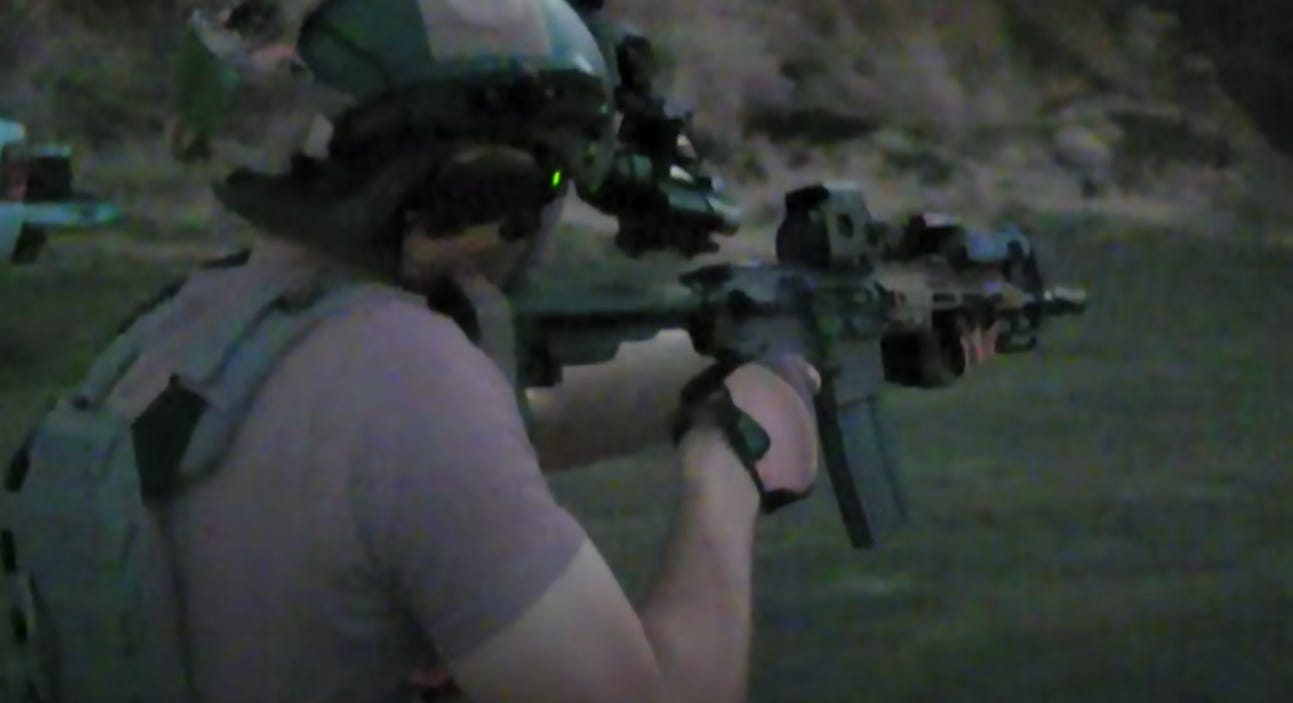A quick overview of AR-15 Optics:
Hello friends, I hope you’re well.
This week I have an extremely basic post on the most common optics to use on your home defense gun, particularly the AR-15. Experienced gun owners will know pretty much everything here already, but I have a lot of new followers and many of you might be new to guns altogether, so lets get to it…
Why are optics important?
Up until the 21st century, the vast majority of militaries, law enforcement agencies, and civilian shooters were using iron sights on their weapons. Optics (devices using lenses to view and aim at targets) were reserved for precision marksmen and hunters almost exclusively. But as the Global War on Terror kicked off, the US military followed in the footsteps of some of their NATO allies and began issuing optics for the rifles of their common soldiers. Now, they’re pretty much ubiquitous in modern usage, for a couple reasons:
Optics are always going to perform superior to iron sights. We have enough statistical and anecdotal data to put this to bed. Even world champions raised on iron sights get faster after time spent transitioning to optics.
Optics can be as tough as iron sights, or even tougher. Military grade optics like the Aimpoint Red Dot and Trijicon ACOG prism sight are hardened enough that they can be dropped off buildings and still function fine. Iron sights are nothing more than steel. Steel bends when it impacts surfaces hard enough. There’s no real advantage here for the legacy tech anymore.
Optics get better and cheaper every year. As actual firearm technology has hit a sort of wall of stagnation against the constraints of physics and metallurgy, optics are the bleeding edge of technological development within the small arms industry. Today you can buy a $150 rifle scope made in China that’s superior to anything available to the most elite snipers of the Vietnam era. On the high end, premium scopes allow you to see incredible detail from over a mile away, track the flight path of your bullets, or even allow you to see in the dark or through the Infrared spectrum.
Main Categories of Optics
Red Dot Sights - Anyone who has played a videogame in the last 10 years is probably familiar with these. A dot is projected inside a Field of View, and the shooter simply aligns that dot over the target and pulls the trigger. Super-intuitive. While red dots don’t have any practical magnification as a standalone product, they can be paired with an optional magnifier that flips up and into position for longer shots.
Red Dots are what I recommend to almost all new shooters. Not only are red dots easy to use, they’re the superior option (or one of them) when it comes to shooting in close quarters, ie. the distances most people will actually use a carbine to defend their life. They also enjoy some logistical advantages, as they most often use common batteries and have enormously long battery lives (it’s best practice to change batteries just once per year).
Best of all, you can benefit from their usage no matter what your budget is. A $150 Sig Romeo 5 is entirely capable for the average civilian shooter concerned with shooting for recreation or defense, while a $400 Aimpoint is 100% ready to withstand an artillery barrage and get run over by a truck in the fields of Ukraine or the deserts of the Middle East.
Low Powered Variable Optics (LPVOs) - An offshoot of the traditional magnified scope used by hunters and marksmen for over a century, LPVOs combine the useful magnification of a scope with the ability to get a near 1x zoom for close quarters shooting. These are a great option if you think you’ll be taking precision shots over ~200 yards, or engaging threats out to even longer distances.
While not being “quite” as accessible as a Red Dot, LPVOs have an even greater range of quality in price, with cheap Chinese optics coming in around the $250 mark, going to well over $2000 for something like the Vortex Razor HD 1-10x
Prism Sights - Made famous by the venerable Trijicon ACOG, Prism Sights are a compact, economical and lightweight solution for a magnified optic. In fact, there’s a quite a bit of “discussion” (controversy) in the tactical shooting community right now whether someone is served better by a Prism Sight or an LPVO if magnification is going to be kept in the 4x range or below.
There are also 1x prism sights, which are niche but Godsend solution for shooters who want a CQB sight but might have eye problems like astigmatism that can make red dot sights next to unusable.
Holographic Sights - Probably the most niche of modern optics, Holographic sights are often confused for red dots, although they operate from a completely different technology. Far and away the most famous example of these sights are the EOTechs so often used by American special operations and SWAT teams. While red dots have superior battery life, holographic sights are seen as the ultimate choice for CQB shooting, and especially shooting with night vision goggles (shown below). So….maybe not the best choice for the “average” shooter, but definitely something to consider if you want to be/pretend to be an Operator.
That’s all for this week. If you have questions on optics, feel free to hit my DMs on Twitter. See you all soon.




